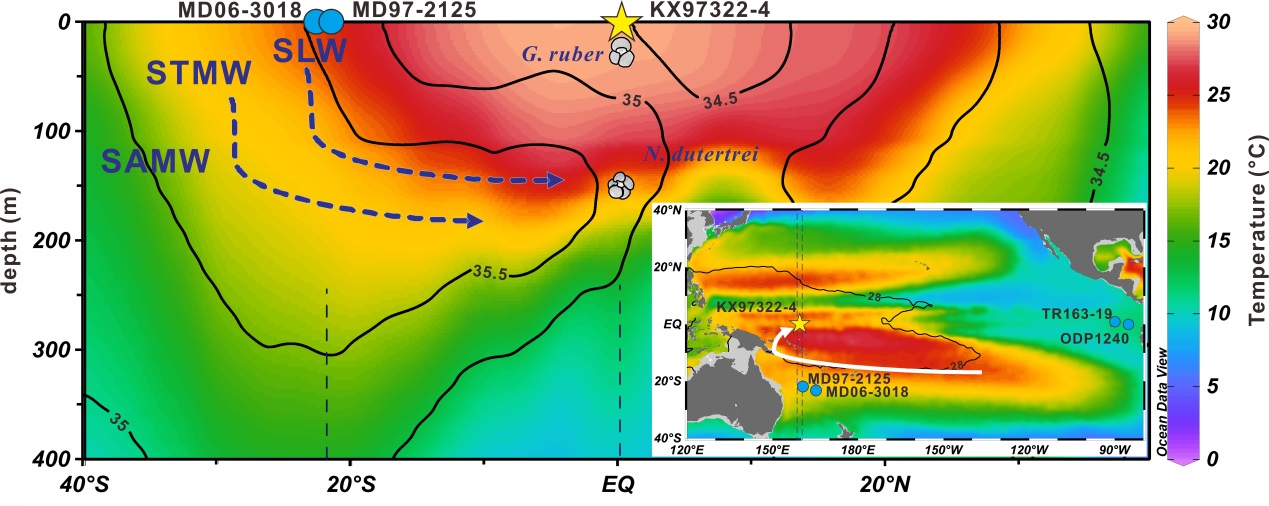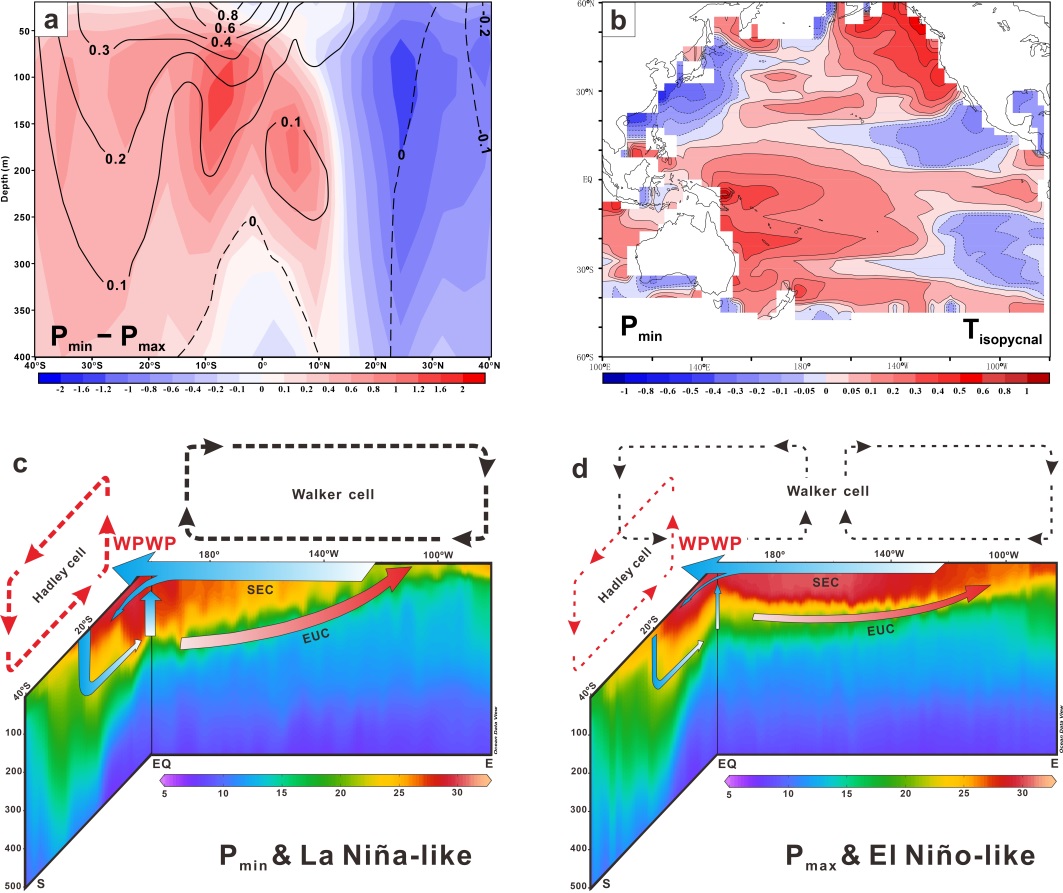New progress in the study of long-term ENSO-like processes regulate subsurface waters of the western Pacific warm pool in the precession band
Modern observation and simulation researches show that the changes of subsurface water in the western Pacific warm pool (WPWP) are closely influenced by the El Nino/Southern Oscillation (ENSO) process and the stratification of the upper-ocean stratification on interannual timescales. Paleo-records show the similar control pattern on much longer time scales, for example, on orbital cycles. However, the detailed mechanism of this process remains unclear.
A recent research on Precession cycles of the El Nino/Southern oscillation-like system controlled by Pacific upper-ocean stratification, finished by the team of Prof. Fengming Chang at the Institute of Oceanology, Chinese Academy of Sciences (IOCAS), which gives a new explanation to this scientific hot topic.
This study was published in Communications Earth & Environment, a well-known journal affiliated to Nature, on 22nd November 2021.
In this study, the paired 360, 000-year temperature and salinity records of the surface and subsurface waters, reconstructed based on planktonic foraminifera Globigerinoides ruber and Neogloboquadrina dutertrei from the mixed-layer and the thermocline-dwelling species respectively, were employed to investigate the variation of the orbital-scale upper ocean thermal/salinity structures of the WPWP.

Fig. 1 Modern temperature and salinity distributions and location of the research core (KX9732204) in the equatorial Pacific
The results show that variations in subsurface temperature and salinity in the western Pacific warm pool have consistently correlated with the shallow meridional overturning cell over the past four glacial-interglacial cycles, and they vary on eccentricity and precession cycles. The shallow meridional overturning cell regulates subsurface waters of the western Pacific warm pool by changing subtropical surface water density and thus equatorial upper-ocean stratification, acting as an ENSO-like process in the precession band. During precession minimum (deglaciation) phases, warming of the equatorial subsurface and a shoaling halocline amplify the WPWP warming, inducing a La Nina-like state, and the shoaled thermocline in the eastern equatorial Pacific would promote increased degassing of CO2 to the atmosphere, thus accelerating global warming.

Fig. 2 Thermocline evolution of the surface and subsurface layers of the tropical Western Pacific in the last 360, 000-year
The newly research demonstrates that the subsurface temperature and salinity variations in the WPWP were governed by precession-paced insolation, modulated subtropical temperature signals and the shallow meridional overturning cell. The result highlights the critical role of western Pacific warm pool in connecting the austral shallow meridional overturning cell to the Earth’s climate system on orbital timescales. Moreover, this study provides a theoretical framework for understanding how ENSO-like processes affecting tropical climate change over long time scales.

Fig.3 Thermal state and model (Community Earth System Model, CESM) simulated meridional and zonal ocean-atmospheric circulation in the Pacific under precession minimum and maximum conditions
The above research work was supported by the Strategic Priority Research Program of the Chinese Academy of Sciences and the National Natural Science Foundation of China.
Zhang, S., Yu, Z.F., Gong, X., Wang Y., Chang* F.M., Lohmman G., Qi, Y.Q., Li*, T.G. Precession cycles of the El Nino/Southern oscillation-like system controlled by Pacific upper-ocean stratification. Communications Earth & Environment. 2021, 2, 239. https://doi.org/10.1038/s43247-021-00305-5.